Our tour would take us to the new Titanic Museum, after a ride around town to see the sights.

As the tour bus left the docks, headed for downtown, I spotted this statue on one of the bridges over the River Lagan. The statue was erected after "the Troubles" and the circle she is holding is meant to represent the Irish people coming together in peace and prosperity (and yes, it started out as quite a hazy day).

The sign over the doorway reads "Ulster Bank Chambers", but it is no longer a bank. The new name is "May's Chambers" and its now a bed and breakfast.
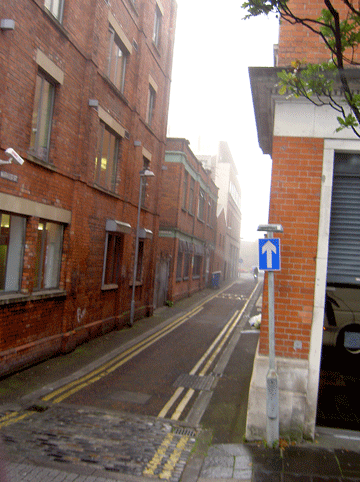
A narrow side street.
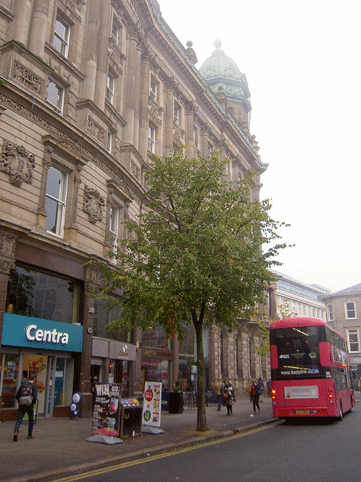
Entering the downtown area.
Since most of the violence from "the Troubles" occurred in the less affluent areas, the downtown core managed to maintain its beautiful architecture.

I couldn't resist taking this, mainly because of the sign on the side of the bus. It reads: "Dog Watchers are patrolling your area . . . Clean up after your dog."
What more need be said.

I think every city in the Commonwealth has a statue of Vicki!
I suspect in this case its because it was Queen Victoria who granted Belfast city status in 1888.

Belfast City Hall
.Construction began in 1898 under the supervision of architect Sir Alfred Brumwell Thomas and was completed in 1906. The city hall in Durban, South Africa is almost an exact replica.
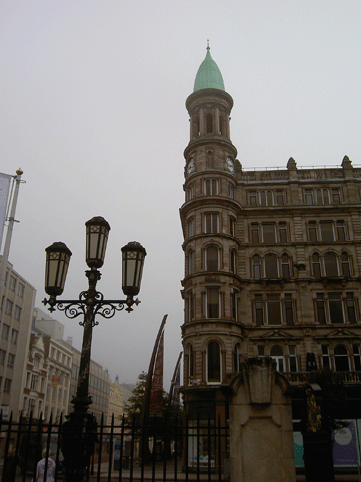
An interesting looking building across from City Hall.

The original Titanic Memorial
The monument, designed by Sir Thomas Brock, was first unveiled in 1920. The inscription on it reads:
Erected to
the imperishable memory of those gallant Belfastmen whose names are here
inscribed and who lost their lives on the 15th April 1912, by the foundering
of the Belfast built RMS Titanic, through collision with an iceberg,
on her maiden voyage from Southampton to New York.
Their devotion to duty and heroic conduct, through which the lives
of many of those on board were saved, have left a record of calm fortitude
and self-sacrifice which will ever remain an inspiring example to succeeding
generations. 'Greater love hath no man than this, that a man lay down
his life for his friends'.

Monument to the Royal Irish Rifles
The Royal Irish Rifles (later know as the Royal Ulster Rifles) was an infantry rifle regiment of the British Army, first created in 1881. The regiment saw service in the Second Boer War, WWI, WWII and the Korean War.
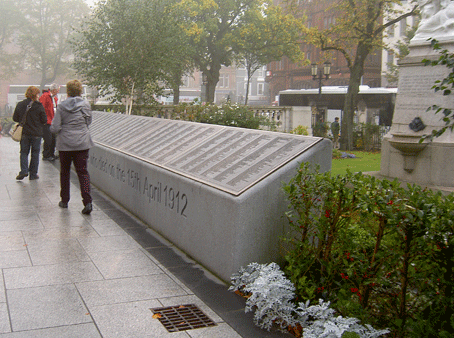
The new Titanic Memorial
The exclusiveness of the first Titanic Memorial was corrected when The Titanic Memorial Garden was officially opened on 15 April 2012, the 100th anniversary of the Titanic sinking. A 9 foot memorial plinth was erected supporting 15 bronze plaques which list, in alphabetical order, the names of 1,512 people who perished on RMS Titanic. This is the first time that the names of everyone who perished have been recorded on one monument.
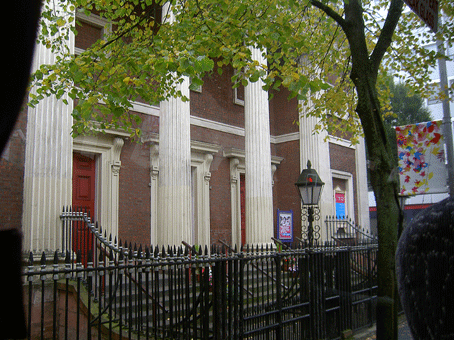
May Street Church
Back on the bus to continue our tour we passed the May Street Church, established over 180 years ago. Unlike many other City centre churches, May Street has survived not only World War II, but also the Troubles of Belfast, and remains in thoroughly original condition. The mission of the church is to engage with the community including the Spiritual, Economic, Social and Cultural renewal of Belfast City.

The Lanyon Building, Queen's University
The Queen's University of Ireland was established formally by Royal Charter on September 3, 1850, and was established in 1845 "to afford a university education to members of all religious denominations" in Ireland.
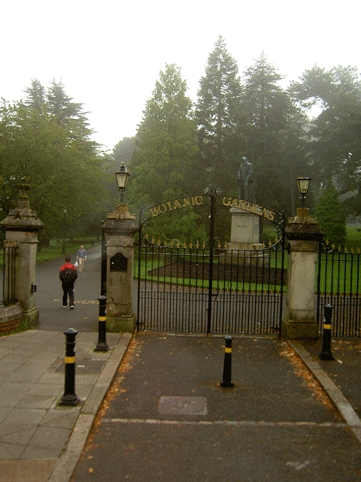
Entrance to the Botanic Gardens

The outskirts of Belfast aren't as architecturally appealing as the more affluent town centre. Many of the buildings are newer, built to replace those destroyed during the bombings. It is the area where "the Troubles" hit hardest, primarily because it is home to both industry and the poorer citizens.
There is also a lot of graffiti from those times, either condemning the British or praising the people's heroes. Unfortunately I didn't get any pictures of it because it always seemed to be on the side of the bus opposite to where I was sitting.
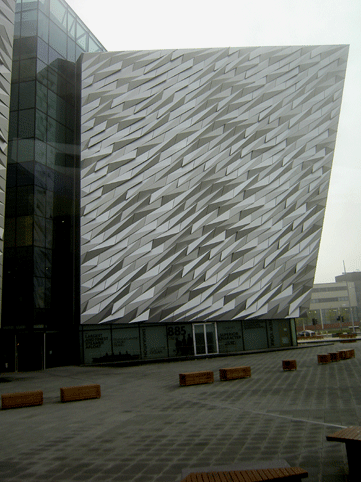
The Titanic Belfast
A major visitor attraction, Titanic Belfast is a monument to Belfast's maritime heritage on the site of the Harland & Wolff shipyard, builders of the Titanic, opened on 31 March 2012, marking the 100th anniversary of her launch and 15 days before the centenary of the tragedy.
The building is a star shaped, representing the logo of White Star Line. Each wing, like the one pictured here, is in the shape and actual dimensions of the bow of the original ship.
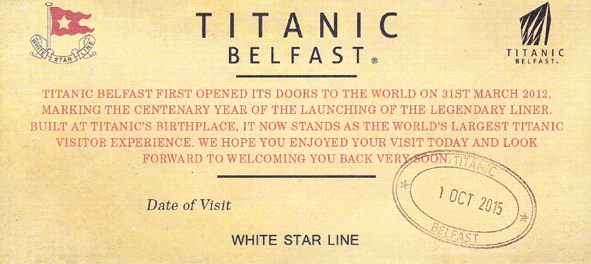
Our entrance ticket to the museum, designed to look similar to the original.
I didn't take any pictures inside the museum as the lighting was generally too dim, so I'll just say it was an amazing display. It features a criss-cross of escalators and suspended walkways and 9 high-tech galleries. Visitors are provided audiophones providing greater detail of what each gallery represents. The galleries are interactive in that they consist not only of artifacts, but also the sights and sounds - projections of scenes through the various stages such as: planning discussions between Lord Pirrie, a director of both Harland and Wolff and the White Star Line and naval architect Thomas Andrews, the managing director of Harland and Wolff's design department; images of workers driving in rivets; and the dits of the telegraphs desperately being sent. The museum does not house any artifacts from the wreck site for ethical reasons, but it does contain many original Titanic and White Star artifacts such as the plans for the ship.

The dry dock where the Titanic was built.

Titanic Belfast stands at the head of the historic slipways where Titanic and Olympic were built and from where these famous ships were first launched into the water. The slipway where Titanic was constructed, shown on the left is marked with a life size plan of Titanic’s Promenade Deck which is inlaid in white stone. Positions of the liner’s lifeboats and funnels are also marked. The benches, seen at the far end of the slip, are positioned exactly as they would have been on board the deck of Titanic.
The lamp posts represent the stanchions of Arrol Gantry, one of the worlds largest cranes.

The Titanic Belfast looking back from the slipway -- and yes, that's Izak doing a walk-about.